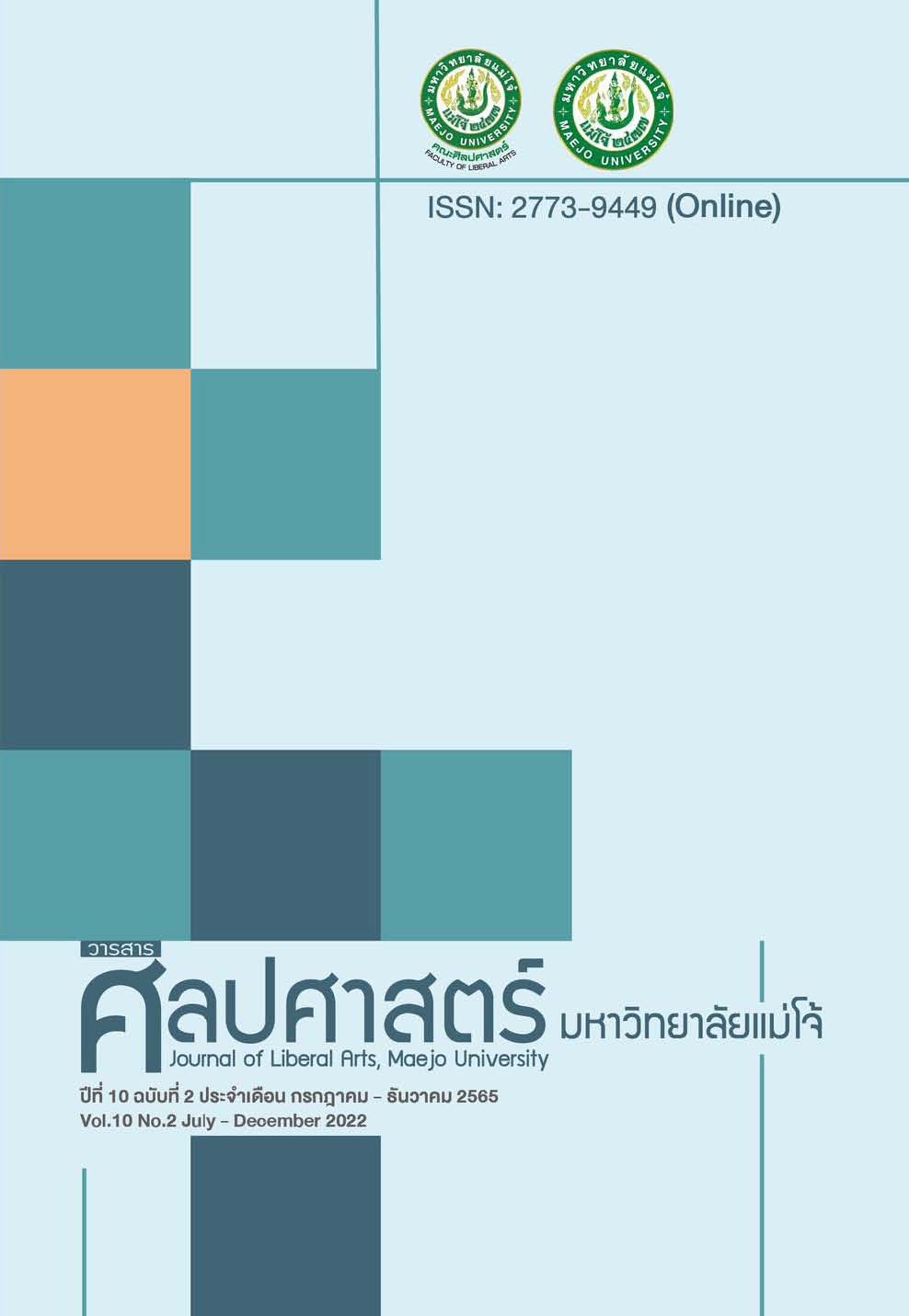การศึกษาภาพลักษณ์ผู้หญิงอินโดนีเซียผ่านเรื่องสั้นชุด Ketut Rapti Kumpulan Cerita Perempuan ของ Ni Koomang Ariani
Main Article Content
บทคัดย่อ
การศึกษาภาพลักษณ์ผู้หญิงอินโดนีเซียผ่านเรื่องสั้นชุด Ketut Rapti Kumpulan Cerita Perempuan ของ Ni Komang Ariani มีวัตถุประสงค์เพื่อวิเคราะห์ภาพลักษณ์ผู้หญิงอินโดนีเซียจาก เรื่องสั้นชุดดังกล่าว พบว่า จากตัวบทสามารถจำแนกภาพลักษณ์ผู้หญิงได้ 3 ลักษณะ คือ 1) ภาพลักษณ์ของผู้หญิงตามความคาดหวังทางสังคม ผ่านตัวละครที่ยอมรับอำนาจของฝ่ายชายภายใต้โครงสร้างทางสังคมที่ให้ความสำคัญกับผู้ชาย ผู้หญิงมีหน้าที่ปรนนิบัติรับใช้ในทุกมิติ จึงจะถือว่าเป็นผู้หญิงที่ดีตามครรลองของสังคม 2) ภาพลักษณ์ผู้หญิงที่สยบยอมต่อโครงสร้างทางสังคม ผู้เขียนได้วิพากษ์การแต่งงานเพียงเพื่อให้ชีวิตสมบูรณ์ตามบรรทัดฐานทางสังคม ทำให้ผู้หญิงไม่มีความสุขจากการแต่งงาน 3) ภาพลักษณ์ผู้หญิงที่ปฏิเสธโครงสร้างทางสังคม ผ่านตัวละครผู้หญิงและชี้ให้เห็นว่า การศึกษาจะเป็นทางออกที่สำคัญ นอกจากนี้ยังได้สร้างภาพผู้หญิงที่มีความสุข อันเกิดจากการสลัดพันธนาการที่เรียกว่า “ขนบ” การใช้ชีวิตโดยไม่ต้องพึ่งพาผู้ชาย ทำให้ผู้หญิงอิสระสามารถบริหารชีวิต และสร้างธุรกิจ นำมาซึ่งความมั่นคงและมั่งคั่งได้ไม่ต่างจากผู้ชาย
Article Details

อนุญาตภายใต้เงื่อนไข Creative Commons Attribution-NonCommercial-NoDerivatives 4.0 International License.
ต้นฉบับที่ได้รับการตีพิมพ์ในวารสารคณะศิลปศาสตร์ มหาวิทยาลัยแม่โจ้ ถือเป็นกรรมสิทธิ์ของมหาวิทยาลัยแม่โจ้ ห้ามนำข้อความทั้งหมดหรือบางส่วนไปพิมพ์ซ้ำ เว้นเสียแต่จะได้รับอนุญาตจากมหาวิทยาลัยฯ เป็นลายลักษณ์อักษรเอกสารอ้างอิง
ไชยรัตน์ เจริญสินโอฬาร. (2545). วาทกรรมการพัฒนา : อำนาจ ความรู้ ความจริง เอกลักษณ์ และความเป็นอื่น. กรุงเทพฯ: ศูนย์วิจัยและผลิตตำรา มหาวิทยาลัยเกริก.
ไชยรัตน์ เจริญสินโอฬาร. (2551). ภาษากับการเมือง/ ความเป็นการเมือง. กรุงเทพฯ: มหาวิทยาลัยธรรมศาสตร์
นงค์ลักษณ์ เหล่าวอ บัทเลอร์. (2560). ภาพสะท้อนสังคมในวรรณกรรมร่วมสมัยของอินโดนีเซีย.วารสารรูสมิแล, 38(2), 79-86.
บัญชา สำเร็จกิจ. (2556). มองวรรณกรรมอาเซียนผ่านวรรณกรรมอินโดนีเซีย เรื่อง แผ่นดินของ ชีวิต. วารสารรูสมิแล, 34(2), 8-26.
ปรานี วงษ์เทศ. (2549). เพศภาวะในสุวรรณภูมิ. กรุงเทพฯ: มติชน.
ปรานี วงษ์เทศ. (2544). เพศและวัฒนธรรม Gender and Culture. กรุงเทพฯ: เรือนแก้วการพิมพ์.
มิแช็ล ฟูโกต์. (2547). ร่างกายใต้บงการ. กรุงเทพฯ: คบไฟ.
หลุยส์ อัลธูแซร์, แปลโดย กาญจนา แก้วเทพ. (2557). อุดมการณ์และกลไกของรัฐทางอุดมการณ์. (พิมพ์ครั้งที่ 2). กรุงเทพฯ: สยามปริทัศน์.
อัจจิมา แสงรัตน์. (2555). อารมณ์ต้องห้าม: เพศและความรักในวรรณกรรมรัญจวนของนักเขียน สตรีอินโดนีเซียร่วมสมัย. วิทยานิพนธ์หลักสูตรปริญญาศิลปศาสตรมหาบัณฑิต สาขาวิชาเอเชียตะวันออกเฉียงใต้ศึกษา มหาวิทยาลัยวลัยลักษณ์.
อรอนงค์ ทิพย์พิมล. (2560). กฎหมายชารีอะห์กับผู้หญิงอาเจะห์: ชายขอบของชายขอบ. วารสารประวัติศาสตร์ธรรมศาสตร์, 4(1), 116-158.
เฮสตี อารยานี. (2558). ภาพแทนของการกดขี่สตรีชาวอินโดนีเซียในยุคหลังอาณานิคม ในนวนิยายเรื่องไจปงแดนเซอร์ ของ แพทริค สวีทติง. การศึกษาค้นคว้าอิสระ ศิลปศาสตรมหาบัณฑิต ภาษาอังกฤษ มหาวิทยาลัย เชียงใหม่.
Althusser, Louis. 1984. Essay on Ideology. London: Thetfort Press.
Scott, James C.1985. Weapons of the Weak: Every Forms of Peasant Resistance. New Haven: Yale University Press.

